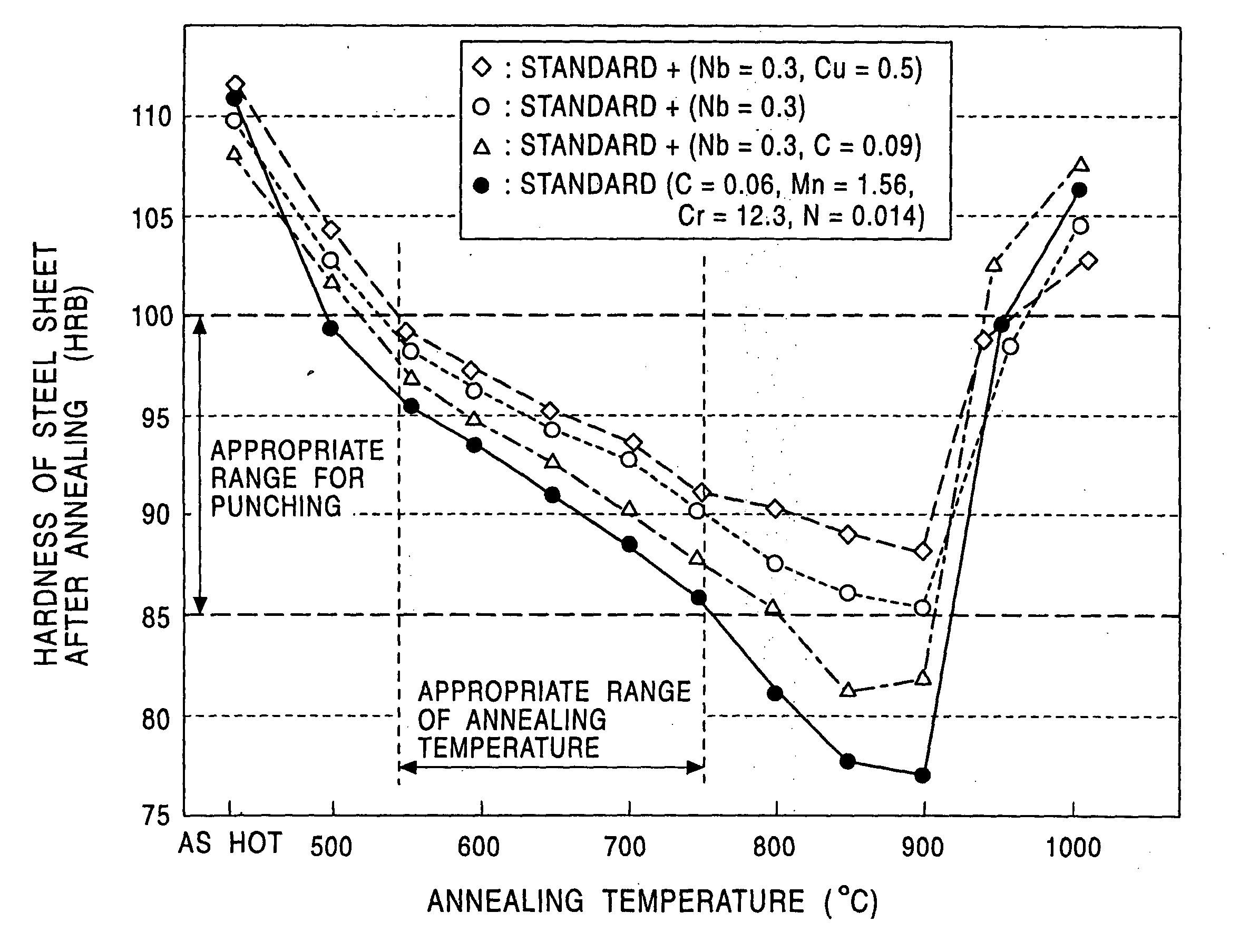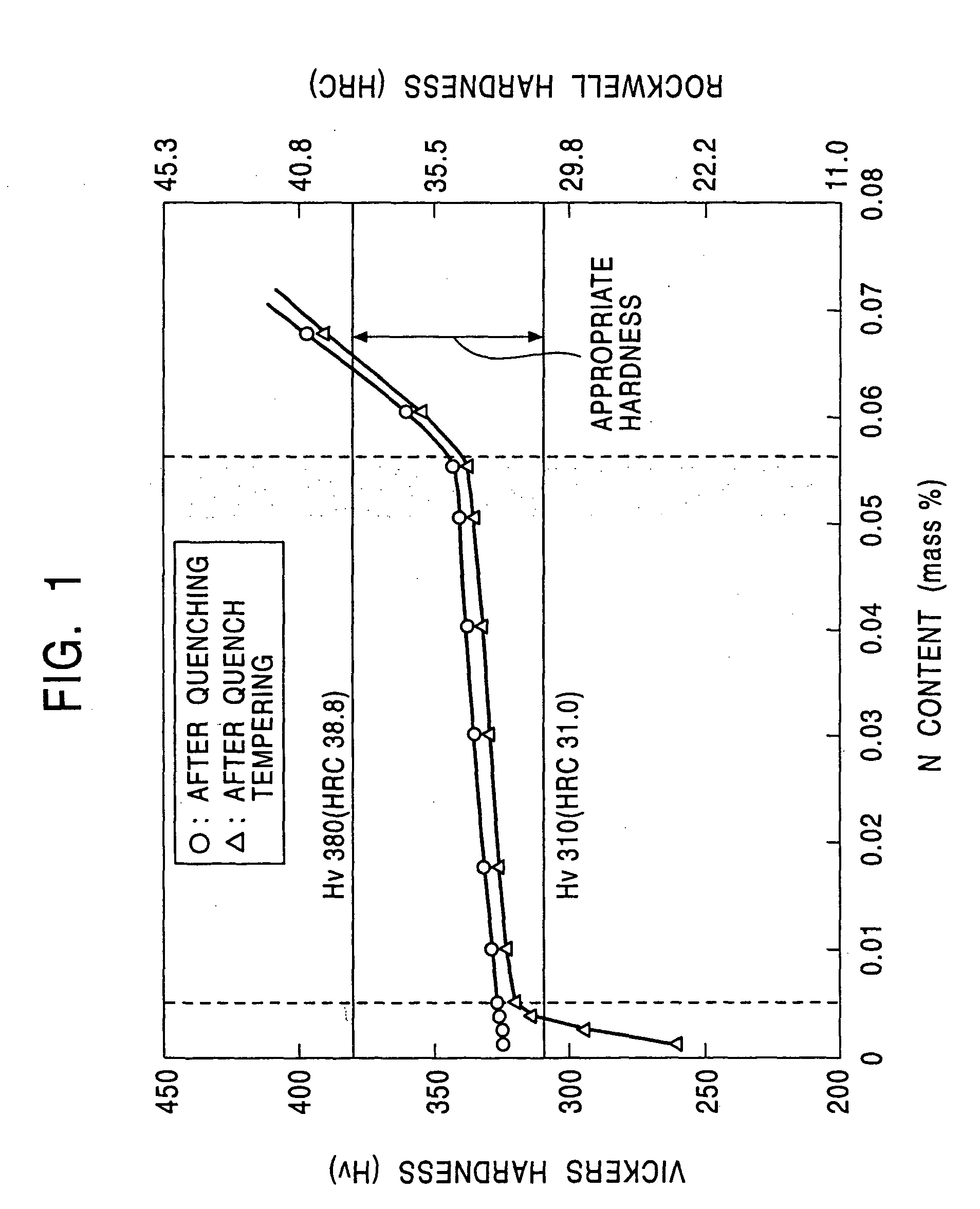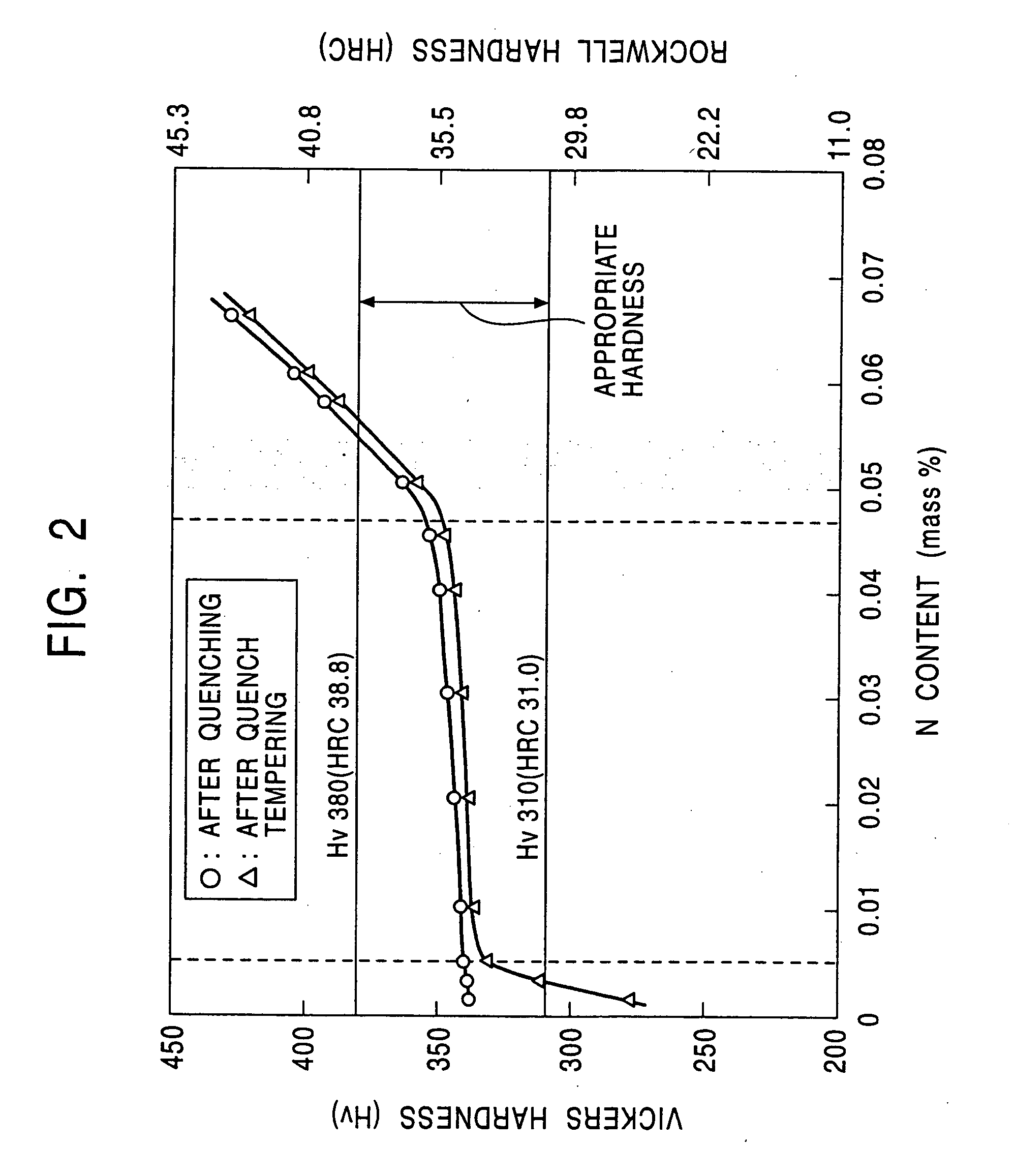Low carbon martensitic stainless steel and method for production thereof
a low-carbon martensitic stainless steel and low-carbon martensitic technology, applied in the field of method for production thereof, can solve the problems of low hardness of conventional low-carbon martensitic stainless steel, high production cost, corrosion resistance decrease, etc., and achieve the effect of increasing the softening resistance in tempering
- Summary
- Abstract
- Description
- Claims
- Application Information
AI Technical Summary
Benefits of technology
Problems solved by technology
Method used
Image
Examples
example 2
[0104] Steel samples having the compositions shown in Tables 3 and 4 were prepared, cast into slabs having a thickness of 200 mm by a continuous casting process, heated up to 1150.degree. C., processed into hot-rolled steel sheets having a thickness of 5 mm, and then annealed at 800.degree. C. Using the above sheets, test pieces (a thickness of 5 mm, a width of 50 mm, and a length of 50 mm) for the Rockwell scale C hardness test (Vickers hardness (Hv) was also measured for reference purposes) after quenching, other test pieces (a thickness of 10 mm, a width of 5 mm, and a length of 55 mm) for a subsize Charpy impact test in conformity with JIS Z 2202 and a corrosion resistance test (salt spay) were prepared. The quenching temperature was 800.degree. C. to 1050.degree. C. Furthermore, other samples for measuring the blanking workability (the shear drop in a blanking step) before quenching, the bending workability, the machinability (the drilling workability), and the oxidation resist...
example 3
[0113] Steel samples having the composition shown in Table 14 were prepared and cast into slabs having a thickness of 200 mm by a continuous casting process, heated up to 1150.degree. C., and processed into hot-rolled steel sheets having a thickness of 5 mm. The hot-rolled steel sheets were then annealed under the conditions shown in Table 15. Using the above sheets, test pieces used for measuring the Rockwell scale C hardness and other test pieces used for measuring the punching workability (the shear drop arising in blanking) before annealing were prepared. The punching workability test was performed by punching a ring-shaped disk having an outer diameter of 150 mm and an inner diameter of 50 mm in the hot-rolled steel sheet, and the shear drops X and Z were measured for the punched cross section of the inner diameter side. The method of measuring the shear drop was the same as Experiment 4 and Example 2.
[0114] The test results are shown in Table 15. The steel samples which have t...
PUM
| Property | Measurement | Unit |
|---|---|---|
| heat resistance | aaaaa | aaaaa |
| temperature | aaaaa | aaaaa |
| temperature | aaaaa | aaaaa |
Abstract
Description
Claims
Application Information
 Login to View More
Login to View More - R&D
- Intellectual Property
- Life Sciences
- Materials
- Tech Scout
- Unparalleled Data Quality
- Higher Quality Content
- 60% Fewer Hallucinations
Browse by: Latest US Patents, China's latest patents, Technical Efficacy Thesaurus, Application Domain, Technology Topic, Popular Technical Reports.
© 2025 PatSnap. All rights reserved.Legal|Privacy policy|Modern Slavery Act Transparency Statement|Sitemap|About US| Contact US: help@patsnap.com



